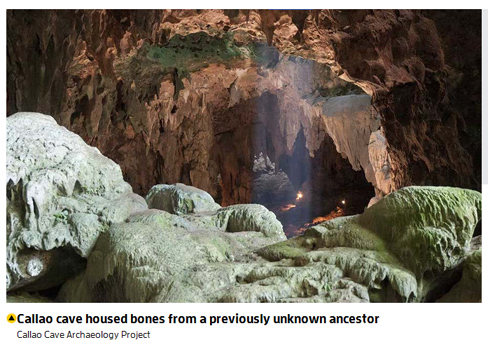
Research has revealed that the common ancestor that we share with chimpanzees (our closest primate cousins) lived in Africa 6 to 7 million years ago. But we know far less about the older ancestors that we share with modern apes — those which lived more than 10 million years ago.
A newly announced 13-million-year-old skull might help shed some light on where those ancestors came from and what they looked like.
Early Primate Relatives Lived in High Arctic 52 Million Years Ago
Paleontologists have described two new species of the early primatomorphan genus Ignacius from Ellesmere Island, Nunavut, Canada.
The two new species, named Ignacius dawsonae and Ignacius mckennai, lived on Ellesmere Island approximately 52 million years ago.
Flying lemurs are the closest relatives of primates (2007)
New molecular and genomic data gathered by a team including Webb Miller, a professor of biology and computer science and engineering at the Penn State University, has shown that the colugos -- nicknamed the flying lemurs -- is the closest group to the primates.
Treeshrews are closely related to primates.
Though called 'treeshrews', and despite having previously been classified in Insectivora, they are not true shrews and not all species live in trees. Treeshrews were moved from the order Insectivora into the order Primates because of certain internal similarities to primates, for example, similarities in the brain anatomy and classified as a "primitive prosimian", however they were soon split from the primates and moved into their own clade. Taxonomists continue to refine the treeshrews' relations to primates and to other closely related clades.
Unlike shrews, they possess a fairly large brain for their size. While some research has found treeshrews as the closest living relative to primates, most molecular studies currently find the flying lemurs (colugos) as the sister group to primates despite their gliding specializations.
The majority of earliest known fossils belonging to this group date to about 66 million years ago, shortly after the K-Pg extinction event, though molecular data suggest they may have originated earlier, during the Cretaceous period. This is further supported with fossils of Altacreodus magnus and two species from genus Protungulatum dated about 70.6 million years ago.
The common ancestor of Boreoeutheria lived between 107 and 90 million years ago. The boreoeutherian ancestor gave rise to species as diverse as giraffes, dogs, mice, bats, whales, and humans. The concept of a boreoeutherian ancestor was first proposed in 2004 in the journal Genome Research. The paper's authors claimed that the genome sequence of the boreoeutherian ancestor could be computationally predicted with 98% accuracy, but would "take a few years and a lot of money". It is estimated to contain three billion base pairs.
Afrotheria is a clade of mammals, the living members of which belong to groups that are either currently living in Africa or of African origin: golden moles, elephant shrews (also known as sengis), tenrecs, aardvarks, hyraxes, elephants, sea cows, and several extinct clades. Most groups of afrotheres share little or no superficial resemblance, and their similarities have only become known in recent times because of genetics and molecular studies.
The common ancestry of these animals was not recognized until the late 1990s.
Many Afrothere groups are found mostly or exclusively in Africa, reflecting the fact that Africa was an island continent from the Cretaceous until the early Miocene around 20 million years ago, when Afro-Arabia collided with Eurasia.
Because Africa was isolated by water, Laurasian groups of mammals such as insectivores, rodents, lagomorphs, carnivorans and ungulates could not reach Africa for much of the early to mid-Cenozoic. Instead, the niches occupied by those groups on the northern continents were filled by various groups of Afrotheres via the process of convergent evolution.